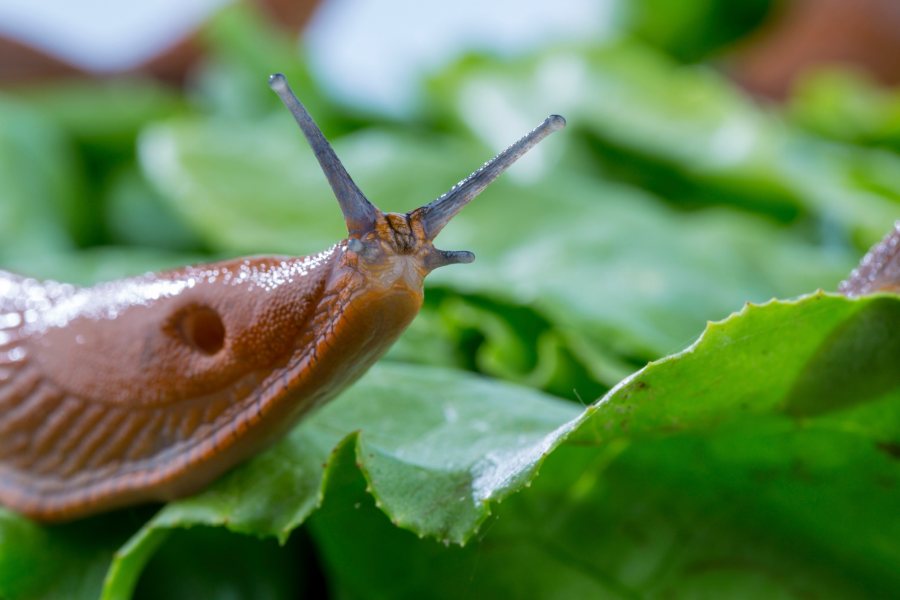
Farmers are gearing up this autumn to target slug hotspots with cutting-edge AI-powered maps, marking a major leap forward in the fight against these destructive pests.
Farmers taking part in a major research initiative are preparing to apply patch treatments against slugs, using advanced risk prediction maps to guide their efforts.
Collaborating closely with scientists and innovators, they are making significant progress in managing these troublesome pests.
The work is part of SLIMERS – Strategies Leading to Improved Management and Enhanced Resilience against Slugs – a three-year, £2.6m research programme involving over 100 farms.
The Defra-funded project is led by the British On-Farm Innovation Network (BOFIN), which hopes to develop cost-effective forecasting and precision treatment tools such as AI-powered autonomous slug monitoring, biological control methods, and investigating ‘slug resistant’ wheat varieties.
As the project enters its third and final year, researchers at Harper Adams University, who are also taking part in SLIMERS, have developed a reliable model to predict slug hotspots in fields.
Using data gathered from farmers’ slug monitoring over the previous two years, alongside detailed soil mapping and testing, the model identifies areas with a high probability of slug presence.
The next phase involves the team of ‘Slug Sleuth’ farmers testing the model by applying slug pellets selectively, rather than blanket spraying. The data collected will be used to further refine the model.
Professor Keith Walters, lead researcher at Harper Adams, said: “We’ve known for some time that slugs gather in patches, but before SLIMERS we didn’t fully understand the specific factors causing this or how to reliably locate those patches.
“Thanks to the data collected by the Slug Sleuths, we now have that understanding. We are using our predictive model to create detailed risk maps for their fields.
"In 2025-26, we are asking them to treat only the predicted slug hotspots to fine-tune the models and bring precision pest management closer to reality.”
Agri-tech firms and organisations, including the UK Agri-Tech Centre, Fotenix, and Farmscan Ag, are developing AI-based slug detection and precision biological control using nematodes.
Charles Veys, CEO of Fotenix, explained: “Our role is to build AI-powered slug detection, right there in the field. But first, we’ve got to train the AI, and that means putting slugs in the crosshairs.”
Dr Kerry McDonald-Howard, research associate at the UK Agri-Tech Centre, has been collecting data using Fotenix’s AI-driven multi-spectral imaging cameras, both in the lab and on farms, to identify the precise spectral signature of slugs.
Since slugs typically emerge after dark, this has involved late-night fieldwork. She said: “By harnessing AI and multi-spectral imaging, we are making significant progress towards in-field detection and identification of slugs.
"The next step is to combine this technology with precision application, enabling targeted biological control with nematodes for greater accuracy and efficiency.
“Through SLIMERS, we are translating advanced research into practical tools that could transform and future-proof slug management for UK farmers.”
Meanwhile, Farmscan Ag is developing a precision spray system with an exceptionally narrow spray width, designed to be mounted on an autonomous farm vehicle.
The 20 farmers participating as Slug Sleuths have found the slug activity data invaluable. East Yorkshire farmer Adam Hayward said: “I don’t feel like we’re ever truly on top of slugs, and I couldn’t see a long-term solution.
"There must be a better way to control slugs, which is exactly what this project is trying to develop.”
Paid for their efforts monitoring slug traps weekly and recording data via a smartphone app, Mr Hayward discovered significant variation in slug presence even within a few metres and between different days.
“It quickly became clear to me that spreading pellets across the whole field isn’t the way to go,” he added.
Tom Allen-Stevens, managing director of BOFIN and project lead, said that with increasing pressure on chemical controls, finding sustainable, environmentally friendly solutions has never been more important.
“What’s remarkable is that soon we will have a service to offer all UK farmers that reduces reliance and spending on pellets to control one of arable farming’s biggest pests."
